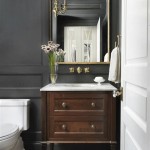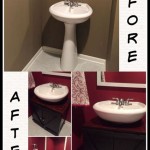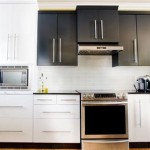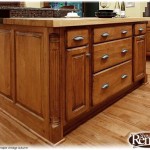Best Way to Remove Grease From Wooden Kitchen Cabinets
Wooden kitchen cabinets, while aesthetically pleasing and adding warmth to a kitchen, are particularly susceptible to accumulating grease and grime. This is especially true for cabinets located near the stove, where cooking splatters and airborne grease particles inevitably settle. Over time, this buildup can become stubborn and unsightly, potentially damaging the finish of the wood if left unaddressed. The removal of grease from wooden cabinets requires a careful and methodical approach, prioritizing gentle cleaning methods to avoid scratching or discoloring the surface. Selecting the appropriate cleaning agents and using the correct techniques are crucial for achieving optimal results and maintaining the integrity of the cabinets.
Effective grease removal hinges on understanding the nature of the substance and the properties of the wood involved. Grease is generally composed of fatty acids and oils, which are hydrophobic, meaning they repel water. This characteristic makes it difficult to remove with water alone. Wooden cabinets, on the other hand, are porous materials, meaning they have tiny openings that can absorb grease and other substances. The finish applied to the wood, whether it's varnish, paint, or stain, provides a protective layer, but this layer can be compromised over time due to constant exposure to heat, moisture, and cleaning agents. Therefore, the chosen cleaning solution should be capable of dissolving grease without damaging the finish or penetrating the wood itself.
Choosing the Right Cleaning Solution
The market offers a variety of cleaning solutions designed for degreasing surfaces, but not all are suitable for wooden cabinets. Harsh chemicals such as ammonia, bleach, and abrasive cleaners should be avoided, as they can strip the finish, discolor the wood, or cause irreparable damage. Instead, focus on gentler, more natural options that are effective at cutting through grease without harming the wood. Several readily available household ingredients can be used to create effective degreasing solutions.
One of the most popular and effective options is a mixture of warm water and dish soap. Dish soap is formulated to break down grease, making it easier to remove. However, it's important to use a mild dish soap that doesn't contain harsh chemicals or abrasive particles. Add a few drops of dish soap to a bowl of warm water and mix well. This solution can be used to clean a wide range of surfaces, including wooden cabinets.
Another effective cleaning solution is a mixture of warm water and vinegar. Vinegar is a natural degreaser that can help to dissolve grease and grime. It also has antibacterial properties, making it a useful cleaning agent for kitchens. Mix equal parts warm water and white vinegar in a spray bottle or bowl. The acidity of the vinegar helps to cut through grease, but it is important to dilute it to avoid damaging the finish on the cabinets. Regular use of a diluted vinegar solution can also help to prevent future grease buildup.
Baking soda is another versatile household ingredient that can be used for cleaning grease from wooden cabinets. It's a mild abrasive that can help to scrub away stubborn grease stains without scratching the surface. To use baking soda, create a paste by mixing it with a small amount of water. Apply the paste to the greasy areas and gently scrub with a soft cloth or sponge. Rinse thoroughly with clean water and dry the cabinets with a clean towel. Baking soda is particularly effective for removing hardened grease and food splatters.
For particularly stubborn grease stains, a combination of the above methods might be necessary. For instance, one might start by applying a vinegar solution to loosen the grease, followed by a baking soda paste to scrub away the remaining residue. As with any cleaning solution, it's always advisable to test it on an inconspicuous area of the cabinet first to ensure it doesn't damage the finish.
The Cleaning Process: A Step-by-Step Guide
Once the appropriate cleaning solution has been selected, the next step is to implement the cleaning process. A systematic approach is essential for achieving thorough and consistent results. This involves preparing the area, applying the cleaning solution, scrubbing, rinsing, and drying the cabinets. Neglecting any of these steps can lead to unsatisfactory results or even damage to the cabinets.
Begin by preparing the area. This involves removing any items from the countertops beneath the cabinets and covering the countertops with a towel or plastic sheeting to protect them from drips. This will prevent the cleaning solution from damaging the countertop surface. It's also advisable to open windows or turn on the ventilation fan to ensure proper airflow, especially when using vinegar or other solutions with a strong odor. Wear gloves to protect your hands from the cleaning solution.
Next, dampen a soft cloth or sponge with the chosen cleaning solution. Avoid using abrasive sponges or cloths, as they can scratch the finish of the cabinets. Wring out the cloth or sponge thoroughly to prevent excess liquid from dripping onto the cabinets. Excess moisture can seep into the wood and cause damage over time. Lightly wipe down the cabinets, paying particular attention to areas with visible grease buildup.
For stubborn grease stains, allow the cleaning solution to sit on the surface for a few minutes to loosen the grease. This will make it easier to scrub away without applying excessive pressure. Gently scrub the greasy areas with a soft cloth or sponge. Use circular motions to lift the grease and grime from the surface. Avoid scrubbing too hard, as this can damage the finish of the cabinets. If using a baking soda paste, apply it to the greasy areas and gently scrub with a soft cloth or sponge.
After scrubbing, rinse the cabinets thoroughly with clean water. Dampen a clean cloth with water and wipe away any remaining cleaning solution. Ensure that all traces of the cleaning solution are removed, as any residue can attract dirt and grime over time. Use a separate cloth to dry the cabinets thoroughly. Moisture can damage the wood and cause it to warp or crack. Pay particular attention to the edges and corners of the cabinets, where moisture tends to accumulate.
Preventive Measures for Long-Term Maintenance
While cleaning is essential, preventing grease buildup in the first place is the most effective way to maintain the cleanliness and appearance of wooden kitchen cabinets. Implementing a few simple preventive measures can significantly reduce the amount of cleaning required and prolong the life of the cabinets. These measures involve minimizing grease splatters, regular wiping, and proper ventilation.
One of the most effective ways to prevent grease buildup is to minimize grease splatters during cooking. Use splatter screens when frying or sautéing food to prevent grease from splattering onto the cabinets. When baking, cover food with foil or a lid to contain any splatters. These simple precautions can significantly reduce the amount of grease that accumulates on the cabinets.
Regular wiping of the cabinets is another crucial preventive measure. Wipe down the cabinets with a damp cloth or sponge after each cooking session to remove any fresh grease splatters or food particles. This will prevent the grease from hardening and becoming more difficult to remove later. Focus on the areas around the stove and sink, where grease and grime are most likely to accumulate. This simple routine will prevent the buildup of stubborn grease and grime.
Ensuring proper ventilation in the kitchen is also essential for preventing grease buildup. Turn on the ventilation fan or open windows when cooking to remove airborne grease particles and moisture. This will reduce the amount of grease that settles on the cabinets and other surfaces. Consider installing a more powerful ventilation fan if the existing one is not adequate. Good ventilation not only prevents grease buildup but also helps to remove cooking odors and maintain a healthy indoor environment.
Applying a protective coating to the cabinets can also help to prevent grease from penetrating the wood. Consider applying a coat of furniture polish or wax to the cabinets every few months to create a barrier against grease and grime. This will make it easier to clean the cabinets and prevent the grease from damaging the finish. Choose a furniture polish or wax that is specifically designed for wooden cabinets and follow the manufacturer's instructions carefully.
By following these preventive measures, kitchen cabinets can be kept clean and free of grease, minimizing the need for extensive cleaning and preserving their aesthetic appeal for years to come. Consistent maintenance is key to ensuring that wooden cabinets remain a beautiful and functional element of the kitchen.

How Remove Grease From Wood Kitchen Cabinets

How To Remove Grease From Kitchen Cabinets 3 Methods Bob Vila
:max_bytes(150000):strip_icc()/ways-to-clean-wood-kitchen-cabinets-3017289-01-765f893e7cca49a1ab72d7c49efdf518.jpg?strip=all)
Tips For Cleaning Food Grease From Wood Cabinets

How To Clean Sticky Grease Off Kitchen Cabinets Ovenclean

Get Grease Off Kitchen Cabinets Easy And Naturally

Removing Grease From Kitchen Cabinets House Cleaning Tips Safe S Clean

How To Clean Kitchen Cabinets Everyday Skate
:max_bytes(150000):strip_icc()/ways-to-clean-wood-kitchen-cabinets-3017289-00-fb8e5ae9eb004ec6b968f9d53e74cd1e.jpg?strip=all)
Tips For Cleaning Food Grease From Wood Cabinets

Best Ways To Clean Grease Stains Off Kitchen Cabinets

How To Clean Sticky Grease Off Kitchen Cabinets Infinity
Related Posts








